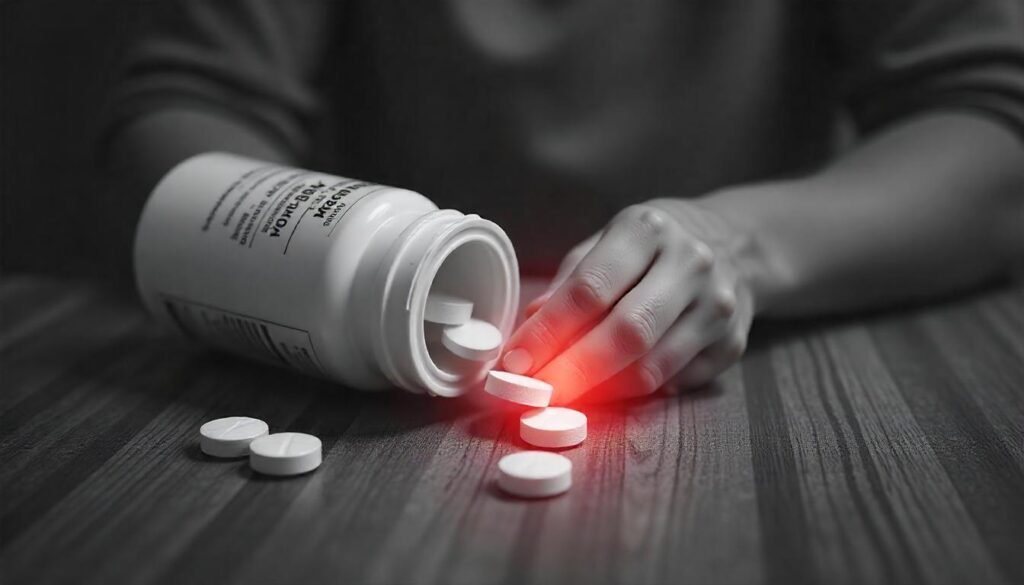Introduction: What is Angina and Why is Treatment Important?
This article provides an overview of angina treatment. Imagine this: You’re walking up a hill, and suddenly, a tight, squeezing sensation grips your chest. You stop, catch your breath, and the pain subsides. This could be angina, a warning sign that your heart isn’t getting enough oxygen-rich blood.
Angina isn’t just a discomfort—it’s a red flag for underlying heart issues, often linked to coronary artery disease (CAD). If left untreated, it can lead to serious complications like heart attacks. The good news? With the right angina treatment, you can manage symptoms, improve your quality of life, and protect your heart. In this guide, we’ll explore everything you need to know about treating angina effectively. Let’s dive in!

Table of Contents
What is Angina? A Quick Overview
Angina is chest pain or discomfort caused by reduced blood flow to the heart muscle. It’s often described as a feeling of pressure, squeezing, or heaviness in the chest. There are three main types of angina:
- Stable Angina: Stable Angina is characterized by a consistent pattern of chest pain that is typically predictable and often occurs when a person engages in physical activity or experiences emotional stress. This type of angina arises under specific circumstances, allowing individuals to anticipate when the discomfort might occur based on their activities or state of mind.
- Unstable Angina: Chest pain that is both unpredictable and tends to be more severe than usual, frequently happening during periods of rest, can be particularly concerning. This type of pain may arise suddenly and without warning, leading to greater discomfort or distress for the individual experiencing it.
- Variant (Prinzmetal) Angina: This condition is relatively uncommon and arises due to spasms that occur within the coronary arteries, which are the blood vessels responsible for supplying the heart muscle with oxygen-rich blood. These spasms can lead to temporary constriction of the arteries, causing various symptoms associated with reduced blood flow to the heart.
Why is Angina Treatment Crucial?
Untreated angina can lead to:
- Heart attacks
- Heart failure
- Arrhythmias (irregular heartbeats)
- Sudden cardiac arrest
The goal of angina treatment is to:
- Relieve symptoms
- Improve blood flow to the heart
- Prevent complications
- Enhance overall heart health
Angina Treatment Options: A Step-by-Step Guide
1. Medications for Angina Relief
Medications are often the first line of angina treatment. Here are the most commonly prescribed options:
- Nitroglycerin:
- Reduces sensations of discomfort in the chest area by promoting the relaxation of blood vessels and facilitating their widening, which subsequently improves blood flow.
- Offered in various forms such as tablets, sprays, or patches, these products provide multiple options for users to choose from.
- Fast-acting angina treatment options are available for the alleviation of acute episodes of angina. These solutions aim to provide rapid relief during moments of intense chest pain associated with this condition.
- Beta-Blockers:
- Lowering the heart rate and reducing blood pressure can significantly contribute to a decrease in the overall workload placed on the heart. This reduction in stress on the cardiovascular system helps to promote better heart health and overall well-being.
- Some examples of commonly used medications in the beta-blocker category are Metoprolol and Atenolol.

- Calcium Channel Blockers:
- Increase the diameter of the blood vessels in order to improve and enhance the overall flow of circulation throughout the entire body system. This will promote better delivery of oxygen and nutrients to tissues while also aiding in the removal of waste products.
- Here are a few examples of medications that are frequently prescribed and widely used in medical practice: Amlodipine, which is often utilized to manage high blood pressure, and Diltiazem, a medication that is also used for the angina treatment of hypertension as well as certain heart conditions.
- Statins:
- Lowering cholesterol levels is an important strategy to help prevent the accumulation of plaque within the arteries, which can lead to serious cardiovascular issues. By managing cholesterol effectively, you can significantly reduce the risk of developing blockages that impede blood flow and contribute to heart disease.
- Examples of medications in this category include Atorvastatin and Simvastatin.
- Aspirin:
- Prevents blood clots, reducing the risk of heart attacks.
2. Lifestyle Changes for Long-Term Management
Medications alone aren’t enough—lifestyle changes are essential for effective angina treatment. Here’s what you can do:
- Adopt a Heart-Healthy Diet:
- Focus on fruits, vegetables, whole grains, and lean proteins.
- Limit salt, sugar, and saturated fats.
- Follow the DASH diet (Dietary Approaches to Stop Hypertension).
- Exercise Regularly:
- Aim for at least 30 minutes of moderate exercise (e.g., walking, swimming) most days.
- Avoid overexertion, which can trigger angina.
- Quit Smoking:
- Smoking damages blood vessels and worsens angina symptoms.
- Manage Stress:
- Practice relaxation techniques like meditation, yoga, or deep breathing.
- Maintain a Healthy Weight:
- Losing even 5–10% of your body weight can significantly improve heart health.
3. Advanced Medical Angina Treatment
For severe or persistent angina, your doctor may recommend advanced treatments:
- Angioplasty and Stenting: A Minimally Invasive Approach to Restoring Blood Flow
- A procedure to open blocked arteries using a balloon and stent.
- Improves blood flow and reduces angina symptoms.
- Angioplasty and stenting have become a cornerstone in the treatment of coronary artery disease (CAD), offering a less invasive alternative to traditional surgery. This procedure aims to open up blocked arteries, restoring vital blood flow to the heart muscle.
- Here’s how it works: a thin, flexible tube called a catheter is inserted into a blood vessel, usually in the groin or wrist. Guided by X-ray imaging, the catheter is carefully advanced to the narrowed or blocked section of the coronary artery. A deflated balloon is then passed through the catheter and positioned within the blockage. Once in place, the balloon is inflated, compressing the plaque against the artery walls and widening the vessel.
- In most cases, angioplasty is followed by the placement of a stent. A stent is a small, expandable mesh tube that acts as a scaffold to keep the artery open after the balloon is deflated. This helps to prevent the artery from narrowing again in the future. Many stents are now coated with medication that is slowly released over time, further reducing the risk of re-narrowing.
- Angioplasty and stenting offer several benefits:
- Improved blood flow: By opening up blocked arteries, this procedure restores adequate blood supply to the heart, relieving symptoms like chest pain (angina) and shortness of breath.
- Reduced angina symptoms: Angina, a common symptom of CAD, often significantly improves or disappears altogether after angioplasty and stenting.
- Minimally invasive: Compared to open-heart surgery, angioplasty is a less invasive procedure with smaller incisions, resulting in less pain, quicker recovery, and shorter hospital stays.
- Coronary Artery Bypass Grafting (CABG): A Surgical Solution for Severe Blockages
- Coronary artery bypass grafting (CABG), often referred to as bypass surgery, is a more extensive surgical procedure used to treat severe CAD, particularly when multiple arteries are blocked or the blockages are complex.
- During CABG, a healthy blood vessel is taken from another part of the body, such as the leg, arm, or chest, and used to create a detour around the blocked portion of the coronary artery. This new pathway allows blood to flow freely to the heart muscle, bypassing the obstruction.
- CABG is typically recommended for patients with:
- Multiple blocked arteries: When several coronary arteries are significantly narrowed or blocked, CABG may be the most effective way to restore blood flow to a larger portion of the heart.
- Severe CAD: In cases where the blockages are particularly severe or located in critical areas of the heart, CABG may offer better long-term outcomes compared to angioplasty.
- Unsuitable anatomy for angioplasty: Some blockages may be difficult to treat with angioplasty due to their location, complexity, or the presence of other medical conditions.
- Enhanced External Counterpulsation (EECP): A Non-Invasive Option for Improving Blood Flow
- Enhanced external counterpulsation (EECP) is a non-invasive therapy that can improve blood flow to the heart. It involves the use of inflatable cuffs that are placed on the patient’s legs and inflated and deflated in a synchronized manner with the heartbeat.
- Here’s how it works: the cuffs inflate during the resting phase of the heartbeat, increasing blood flow to the heart. They then deflate just before the next heartbeat, making it easier for the heart to pump blood. This process helps to improve circulation, reduce angina symptoms, and enhance the heart’s overall function.
- EECP is a valuable angina treatment option for patients who:
- Cannot undergo surgery: For individuals who are not candidates for angioplasty or CABG due to other health issues or anatomical limitations, EECP can provide a non-surgical way to improve blood flow.
- Experience persistent angina: EECP can be effective in reducing the frequency and severity of angina symptoms, even when other treatments have not provided sufficient relief.
- It’s important to note that the choice of angina treatment for coronary artery disease depends on various factors, including the severity and location of the blockages, the patient’s overall health, and their individual preferences. A cardiologist will carefully evaluate each patient’s condition and recommend the most appropriate treatment plan.
- A non-invasive angina treatment that improves blood flow to the heart.
- Ideal for patients who can’t undergo surgery.
4. Alternative Therapies
Some people find relief from angina symptoms through alternative therapies:
- Acupuncture:
- May help reduce chest pain and improve blood flow.
- Coenzyme Q10 (CoQ10):
- A supplement that supports heart health and energy production.
- Omega-3 Fatty Acids:
- Found in fish oil, they help reduce inflammation and improve heart health.
When to Seek Emergency Help
Angina can sometimes escalate into a life-threatening situation. Seek immediate medical attention if you experience:
- Chest discomfort or pain that persists for an extended period, rather than subsiding after just a few minutes, should be taken seriously and warrants prompt medical attention. It’s crucial to be vigilant about such symptoms, as they can sometimes signal an underlying medical condition that requires evaluation and angina treatment. Ignoring persistent chest pain could have serious consequences, so it’s always best to err on the side of caution.
- One particularly concerning sign is chest pain that shows no signs of improvement, even after attempting self-care measures such as taking over-the-counter pain medication or allowing ample time for rest and recovery. If the pain continues unabated despite these efforts, it’s a strong indication that something more serious might be happening and professional medical advice is necessary. Don’t hesitate to seek help if your pain is unresponsive to simple remedies.
- Furthermore, the presence of accompanying symptoms alongside chest pain should heighten your concern. Experiencing shortness of breath, feeling nauseous or vomiting, or encountering episodes of fainting or lightheadedness in conjunction with chest pain can be particularly alarming. These additional symptoms can suggest a more serious underlying issue, potentially involving the heart or lungs, and should never be dismissed. They warrant immediate medical evaluation to determine the cause and ensure appropriate treatment. Remember, it’s always better to be safe than sorry when it comes to your health. If you’re experiencing any combination of these symptoms, don’t delay – seek medical attention right away.

Conclusion: Take Control of Your Heart Health
Angina treatment is not just about relieving chest pain—it’s about protecting your heart and improving your overall quality of life. By combining medications, lifestyle changes, and advanced therapies, you can manage symptoms effectively and reduce the risk of complications.
If you or someone you know is experiencing angina symptoms, don’t wait—consult a healthcare professional today. Your heart deserves the best care!
FAQ Section
1. Can angina be cured completely?
Although angina may not always have a definitive cure, it is possible to effectively manage the condition through appropriate medical angina treatment combined with significant lifestyle modifications. By adopting these changes and adhering to the prescribed therapies, individuals can greatly improve their quality of life and better control the symptoms associated with angina.
2. How long does it take for angina treatment to work?
Medications such as nitroglycerin can offer prompt relief from symptoms, acting swiftly to alleviate discomfort. In contrast, the effects of lifestyle changes and long-term angina treatment regimens often require a substantial amount of time before noticeable improvements can be observed, potentially taking several weeks or even months to manifest significant results.
3. Are there any side effects of angina medications?
Indeed, certain medications can lead to side effects that may include symptoms such as dizziness, headaches, or feelings of fatigue. It is always advisable to consult with your doctor or healthcare provider if you notice any unusual symptoms or changes in your health condition, as they can provide guidance and make necessary adjustments to your angina treatment.
4. Can I exercise if I have angina?
Absolutely, it’s essential to begin at a slow and manageable pace to ensure you do not push yourself too hard. Overexertion can lead to injuries or setbacks, so it’s crucial to take things step by step. To develop a safe and effective exercise regimen tailored to your needs, it is highly recommended that you consult with your doctor or a healthcare professional. They can provide guidance on the best approach to take.
5. What’s the difference between angina and a heart attack?
Angina is caused by reduced blood flow to the heart, while a heart attack occurs when blood flow is completely blocked. Angina pain usually subsides with rest or medication, while heart attack pain is more severe and persistent.
Call-to-Action
If you found this guide helpful, share it with your loved ones to spread awareness about angina treatment and heart health. Together, we can build a healthier future!


